PYRUS
Pyrus
L., Sp. Pl. 1: 479. 1753; Gen. Pl. ed. 5: 214. 1754; Parker, For. Fl. Punj. ed. 1: 220. 1918 (Reprint 1973); Cuizhi & Spongberg, Fl. China @ eFloras.org 9: 173; Catling & Mitrow, Fl. North Amer. @ eFloras.org vol. 9.
Trees or shrubs, mostly deciduous, rarely evergreen, bark grey, reddish or orange brown, young branches smooth, glabrous or tomentose; short shoots (brachyblasts) sometimes present; thorns present or absent. Leaves alternate, petiolate, usually simple, stipulate, involute in bud, venation camptodromous, margin serrate or entire, rarely lobed. Flowers in cymes or corymbs, usually terminating short shoots (brachyblasts); actinomorphic, bisexual, epigynous, white, pink or red. Hypanthium cupular or urceolate. Sepals 5, reflexed or spreading, persistent or deciduous. Petals 5, free, imbricate, white, rarely pink, clawed. Stamens 15-30; anthers usually dark red or purple. Disk annular or lining the hypanthium. Carpels 2-5, connate, adnate to hypanthium; ovary inferior, 2-5-locular, with 2 ovules per locule; styles 2-5, free. Fruit a pome with juicy pulp, rich in stone cells, 2-5-celled, with cartilaginous often 2-valved endocarp with persistent or caducous sepals. Seeds black or blackish- brown, seed coat cartilaginous.
33 species
Pyrus communis
Pyrus communis
L., Sp. Pl. 1: 479; 2: 1200. 1753; Hook. f., Fl. Brit. Ind. 2: 374. 1878; keralaplants.in; Fl. North Amer. @ eFloras.org vol. 9; P. communis var. sativa (DC.) DC., Prodr. 634. 1825; P. sativa DC., Fl. Franc. 4: 430. 1805.
Small to medium-sized deciduous tree to 10 m tall (normally 3-5 m in cultivation), often with pyramidal shaped crown, sometimes rounded crown; branches greyish brown or dark reddish brown, glabrous or glabrescent; short shoots (brachyblasts) of young plants often thorn-tipped; lenticels vertical, elliptical, pale yellow; bark fissured. Buds narrowly ovoid, apex obtuse with imbricate scales, scales tomentose at margin and apex. Leaves alternate, simple, involute in bud; petiole 1.5-5.5 cm, pubescent when young; leaf blade 2.5-10(-12) cm x 1.5-5(-7) cm, ovate, base cuneate or truncate, margin finely serrated, apex acuminate, shiny green adaxially and dull beneath, glabrous pubescent when young, venation camptodromous. Stipules linear-lanceolate, pubescent. Corymbs on short shoots with up to 10 flowers, usually 4-9; pedicels slender, 3-5.5 cm long, pubescent when young, later glabrate; bracts/ bracteoles caducous, 1-1.4 cm, villous at margin, apex acuminate. Flowers actinomorphic, bisexual, epigynous, 2.5-3.5 cm across. Hypanthium turbinate or urceolate, ca. 6 mm long, abaxially glabrous. Sepals 5, ca. 6 mm x 4 mm, ovate or triangular-ovate with short acuminate apex, margin glandular-denticulate, sparsely pubescent abaxially, white tomentose at base adaxially. Petals 5, free, white, 12-15 mm x 10-13 mm, obovate or suborbicular, apex rounded or emarginate, base shortly clawed, deciduous. Stamens usually 20-25 or more, in 2 obscure whorls, about 1/2 as long as petals; filaments of unequal size, 5-9 mm long; anthers 0.5-1 mm long, bithecous, dorsifixed. Carpels 5(or 4), syncarpous, adnate to hypanthium; ovary inferior, 5(or 4)-locular, each loculus with 2 ovules; styles 5, rarely 4, nearly as long as stamens, glabrous. Pome green, yellowish or yellowish-green, globose, subglobose, ovoid or pyriform, gritty, 3-16 cm x 1.5-12 cm; sepals persistent. Seeds black, ca. 8 mm x 4.5 mm
Common Names: Pear, Common Pear, European Pear, Bhutan Pear; Nashpati (Hindi)
-0160.jpg)
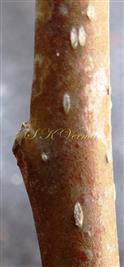
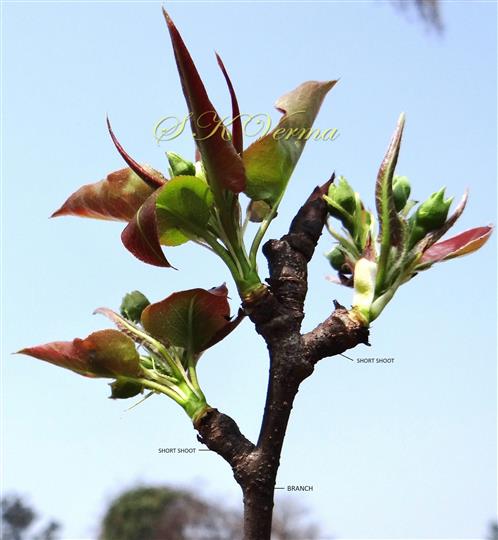
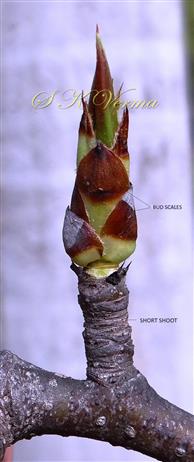
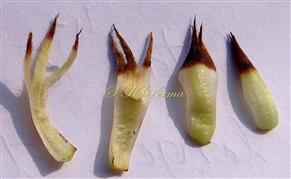
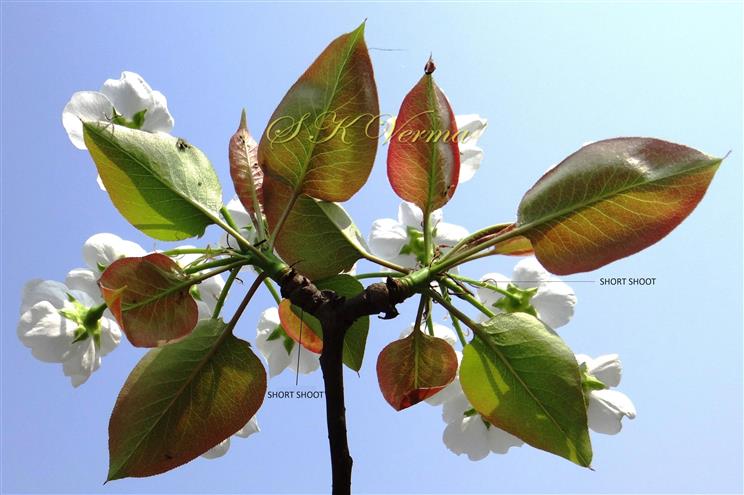
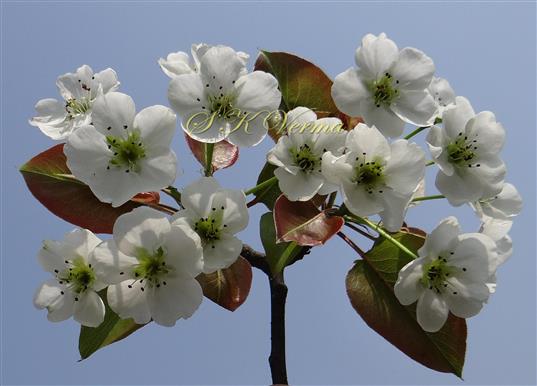
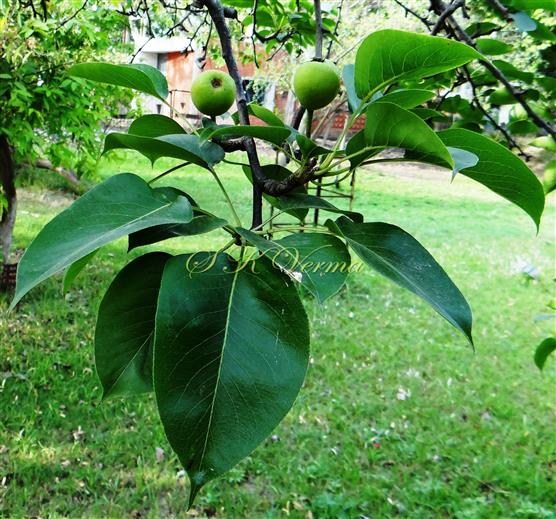
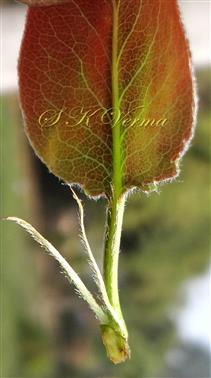
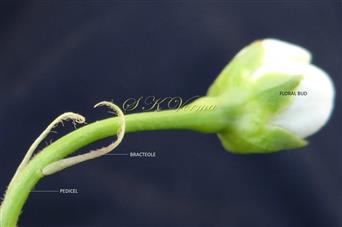
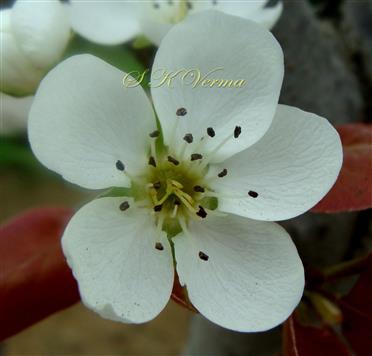
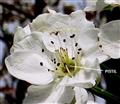
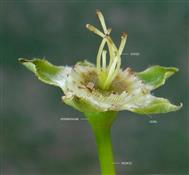



-4528.jpg)

-0160.jpg)















-4528.jpg)